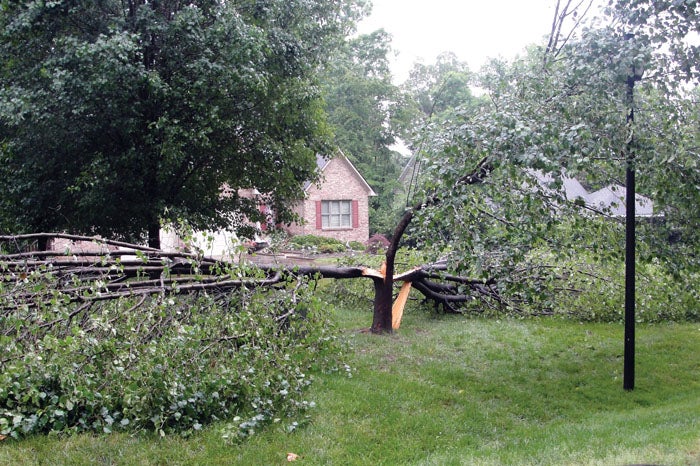Darrell Blackwelder column: Evaluate trees before they become a hazard
Published 12:00 am Saturday, January 8, 2022

- Bradford pear tree damaged by excessive winds. Bradford pears have narrow crotch angles and are very vulnerable to wind and ice damage.
The windy weather earlier this week reminded me of a lady that called a few years ago complaining that she hadn’t slept in three days. She was so worried about the wind blowing down her trees that she couldn’t sleep at night. Tree hazards such as narrow or weak crotch angles and excessive end weights pose imminent threats during excessively windy weather. Homeowners should carefully evaluate large trees and eliminate potential hazardous situations. Below are typical situations in many landscapes.
• Trees that are unnaturally leaning from the ground up should be considered hazardous.
• Soil cracks and heaving are clues that the roots can no longer be trusted to hold the tree.
• Any large tree with an injury covering more than 30% of the circumference of the trunk can create a hazardous situation as it decays. An injury that goes several feet up the outside of a tree trunk can lead to a weak tree. However, a tree can become 70% hollow and still retain 80% of its strength as long as the decay isn’t exposed to the outside.
• It is important to note that landscape trees should be removed when they become hazardous, which is sometimes years before they die.
• Be proactive and remove trees that pose a hazard, especially those near dwellings or other structures.
Contact a licensed arborist to evaluate and determine if you have potentially dangerous trees.
Darrell Blackwelder is the retired horticulture agent and director with the North Carolina Cooperative Extension Service in Rowan County. Contact him at deblackw@ncsu.edu.


